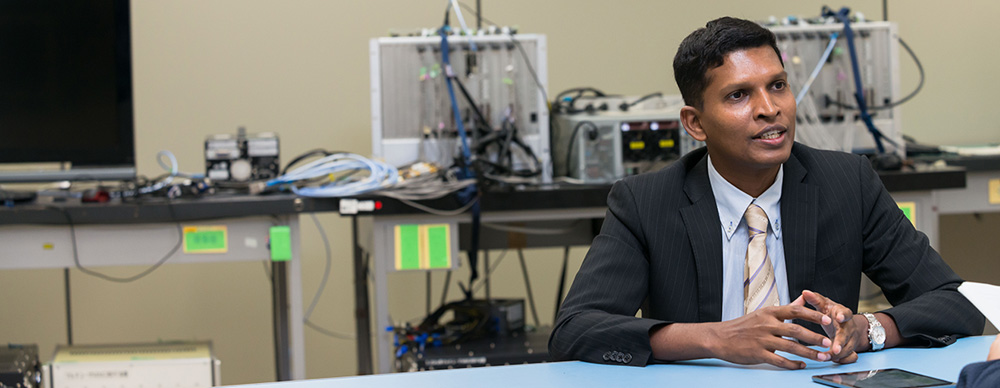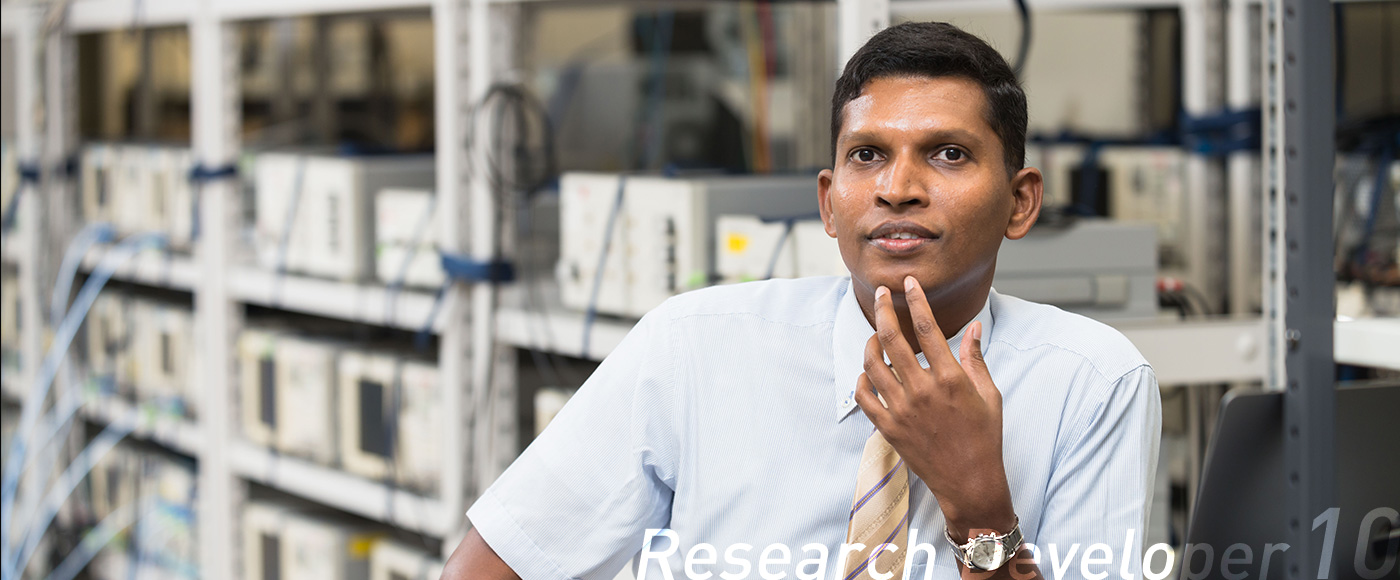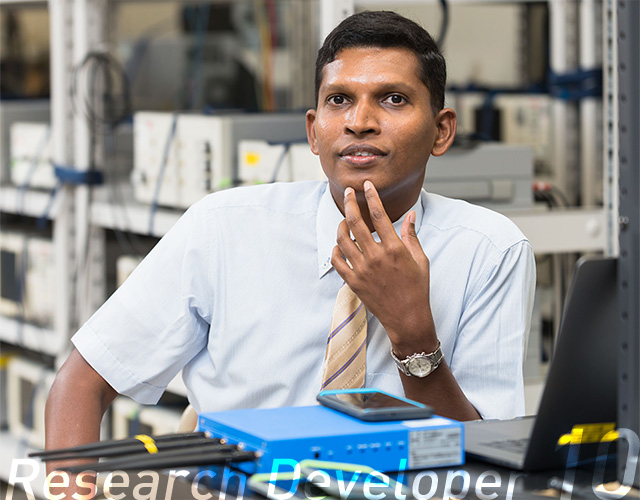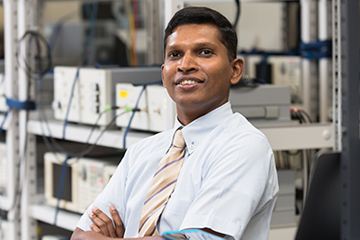Paving the path to the future of wireless communications from NTT
To optimize wireless LAN communications at large-scale event venues for the upcoming Olympics—aiming towards this goal, Abesekara is repeatedly conducting experiments, verifications, and improvements on a daily basis.
Beyond that goal, he envisions a future where the world's most advanced wireless communication control technologies are transmitted from NTT.
Aiming to provide smooth wireless communication
even in large-scale events
In recent years, the number of devices accessing wireless LANs, such as smartphones, has increased rapidly. Access points (APs), which serve as relay points for communications, are being installed at higher densities, and the quality of communications is deteriorating due to interference. Abesekara is studying the operational status of wireless LANs, interference, and other factors, working to develop a wireless LAN system that enables smooth data communications even in densely populated areas, such as exhibition halls and stadiums where there is a high concentration of device usage.
“We are conducting research on the RATOP algorithm for calculating the optimal parameters for improving throughput quality based on a vast amount of data, including wireless LAN operational information and usage environment information obtained from APs. From the values calculated using the algorithm, we have devised a "cooperative wireless LAN system" that operates while dynamically adjusting the parameters in accordance with the user's usage environment, and our goal is to make this system a reality.”
After repeated discussions within the team and with equipment vendors to narrow the gap between theoretical values and experimental results, he has succeeded in experiments to provide an optimal wireless LAN environment in a stadium with a capacity of several tens of thousands, where J1 League matches are being held.

NTT Laboratories has the power
to make future dreams come true.
“By 2020, we want to be able to provide a smooth wireless LAN environment even in large stadiums."
Abesekara says of his goal for the near future. He believes his current research is critical in achieving this goal. He finds the environment at NTT Laboratories, where highly skilled researchers are all working together and stimulating each other, very encouraging.
“There are a lot of people with amazing abilities, so it is a really stimulating company to work for. There are many specialists, and when I talk with them, all kinds of ideas come to mind.”
Since joining the company, he has been active internationally, attending international standardization conferences for wireless communication standards to present technical proposals. He has also presented at numerous academic conferences in Japan and abroad. In the future, he would like to enhance the technology not only for wireless LAN, but also for control of millimeter wave and other unlicensed bands and for cellular connectivity. He says he wants to pursue comprehensive control of wireless communications. They also regularly hold study sessions for young researchers to discuss the future.
“It's exciting to talk about the future. I really enjoy doing research here because NTT can make those dreams come true!”
※The names of research institutes and affiliate organizations of employees in the article are current at the time of the interview. Some may be old names of research institutes.






